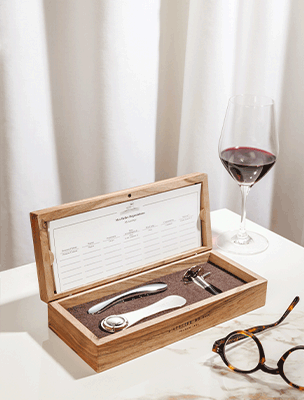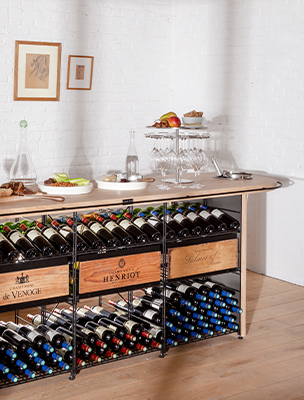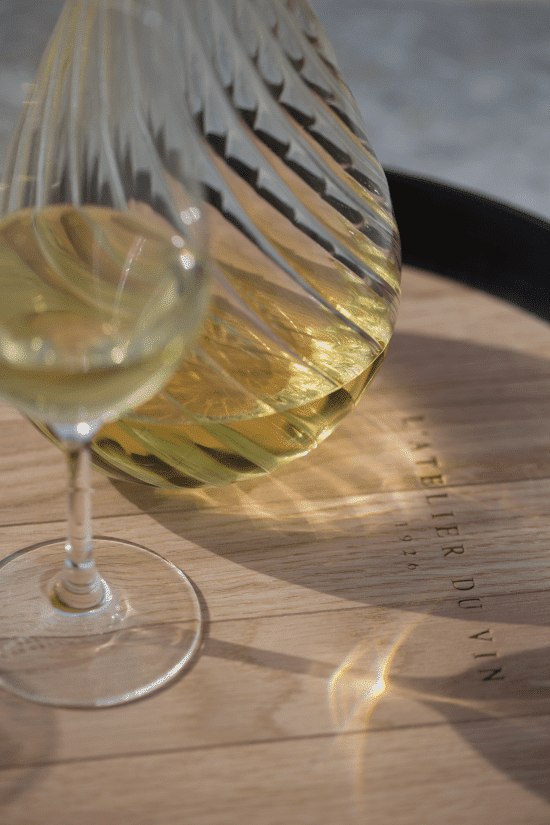Decanting wine is a crucial stage in which a great vintage can be saved—or lost—in a matter of seconds. Any wine specialist, sommelier or oenology fan should be initiated into the art of decanting and aerating wines. This guide will help you learn how to decant a wine, from making preparations to pouring it into a decanter.
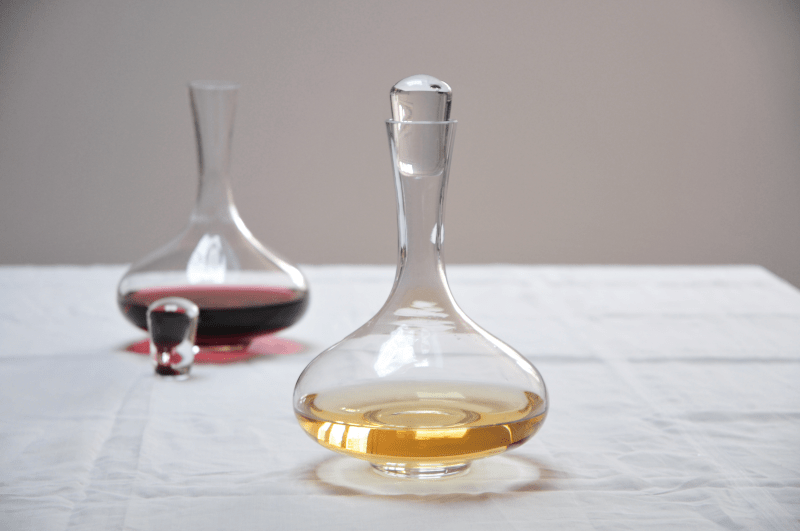
Summary:
- Why should you decant wine?
- How do you decant a bottle of wine?
- How do you use a wine decanter?
- What wines should you decant and aerate?
Why should you decant wine?
Decanting wine is necessary when tannic residues have formed in a bottle of wine that has been aged in a wine cellar, which can spoil the wine’s taste when it is served. It is therefore essential to decant the wine after opening the bottle to separate the liquid from any solid sediments that have formed.
What does decanting wine mean?
Decanting wine involves pouring off the clear liquid from a bottle of wine to free it from its impurities. In other words, decanting wine is the act of separating the wine from its sediments—the heavy, tannic substances that form at the bottom of the bottle over time. Thanks to this process, the wine in your glass is free from sediments when you taste the wine.
Etymologically, the verb “decant” comes from canthus in Latin—the lip of an alchemists’ crucible. Decanting, therefore, refers to pouring the wine from the spout of the bottle to the neck of the wine decanter or tasting glass, an important passage through which only the clear and pure liquor from the bottle must pass through, leaving behind any sediments that form as a result of the aging of the wine.
Decanting should not be confused with aeration. In the art of oenology, wine decanting and aeration are two distinct processes, although they can both be associated with using a wine decanter. For example, an older vintage can be decanted to separate the wine from its sediments but it should not be aerated—which can risk losing the balance of its aromas permanently.
What does decanting do to the wine?
The main effect that decanting has on wine is eliminating the sediments that can form in a wine bottle over the years. Stifled over time by the solid body of its tannins, a vintage’s aromatic bouquet is freed from its inert state when decanted, finally able to recover its vigor and let its aromas express themselves in all their finesse.
The decanting process also has an oxygenating effect on the wine when it is poured from the bottle to the decanter carafe. At this crucial stage, any unpleasant odors that may have passed through the cork quickly evaporate. Carried out with care and a delicate touch, decanting should gently awaken the wine, ridding it of any impurities that have accumulated during its long sleep.
When should you decant a wine?
When a wine has aged to maturity in a wine cellar and sediment has appeared in the bottle, decanting is a necessary part of the process of opening the bottle in order to prepare it for tasting. Before decanting your vintage, remember to gently raise the bottle to an upright position. Stand it upright for at least a few hours, to let most of the sediment sink to the bottom of the bottle, as far as possible from the neck. It will then be easier to keep the sediment inside the bottle when slowly pouring your nectar into the decanter.
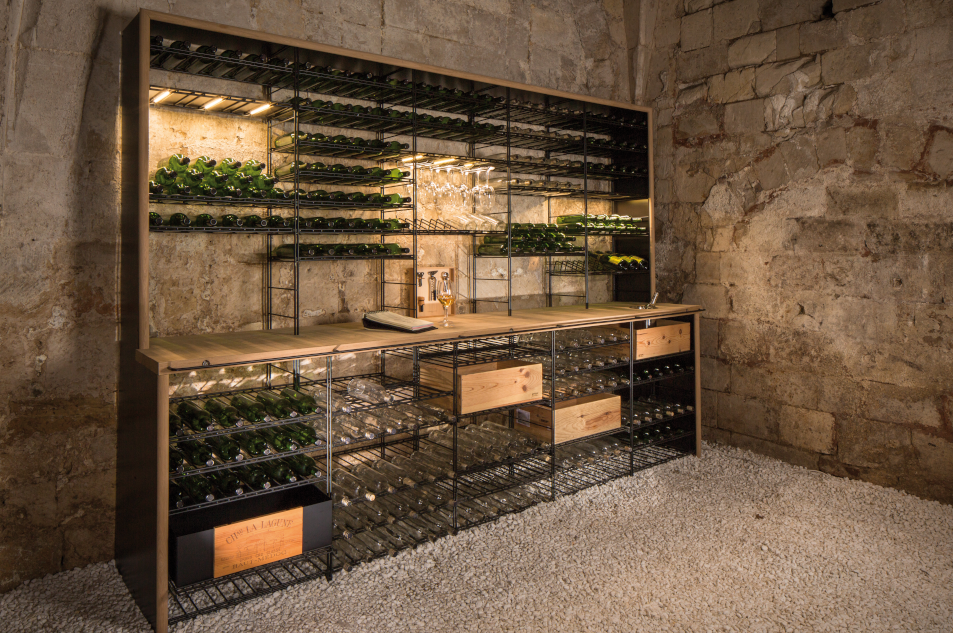
How do you decant a bottle of wine?
In order to do justice to a beautiful mature vintage, it is essential to know how to decant your wine properly in accordance with the practices of the art of oenology. A delicate step, decanting requires the use of the right decanting tools, as well as a full understanding of how to execute the process, in accordance with the best oenological practices.
What steps are involved in decanting wine?
Wine decanting can be carried out using a wine decanter. These are the steps to follow when using a decanter to decant a wine that has formed sediment:
- Gently lift the bottle and stand it in an upright position for 12 to 24 hours before opening, so that the sediment falls to the bottom of the bottle.
- Cut the foil, open the bottle and wipe the neck. Let the wine breathe naturally in the wine cellar, in its opened bottle, for a few hours. The sediment will have time to settle down at the bottom of the bottle.
- Light a candle and place it on the table, not far from the decanter. The candle’s soft light will serve as a guide to better monitor the sediment through the glass of the bottle when pouring it into the decanter.
- Pour the wine very gently into the decanter, gradually slowing down as you proceed. Then, as the sediment approaches the neck, stop pouring to keep it trapped inside the bottle.
- For wines that are particularly sensitive to oxygenation, a decanter with a stopper is recommended—without a cheesecloth—in order to limit the wine’s exposure to the air. If using such a decanter, close with the stopper just after pouring in the wine.
- Your wine is now decanted. All that’s left to do is to serve it, or let it aerate in the decanter before tasting—only if it needs to, depending on the age and type of wine.
For very old and fragile wines, the process of pouring the wine into a decanter would be too harsh and aeration would prove fatal. Instead, you can follow the first two steps in the process and then replace the decanter with your wine tasting glasses. In this case, the decanting process relies entirely on the art of pouring the wine without letting any sediment pass into your glasses. A wine pourer is especially useful in such a situation.
What tool do you need to decant wine?
The main tool that you will need to decant wine is a wine decanter, even if its primary purpose is to aerate the wine. A Universal Developer can be used to complement the process. Positioned at the entrance of the wine decanter (or glass), it allows an initial phase of aeration to take place. In addition, other accessories are available, such as wine pourers and decanting glasses, but these are less common. Once your wine has been decanted, the Exploreur Oenologie glass, a creation patented by L’Atelier du Vin, will bring out all of its flavors thanks to the Aroma line in the wall of the glass.
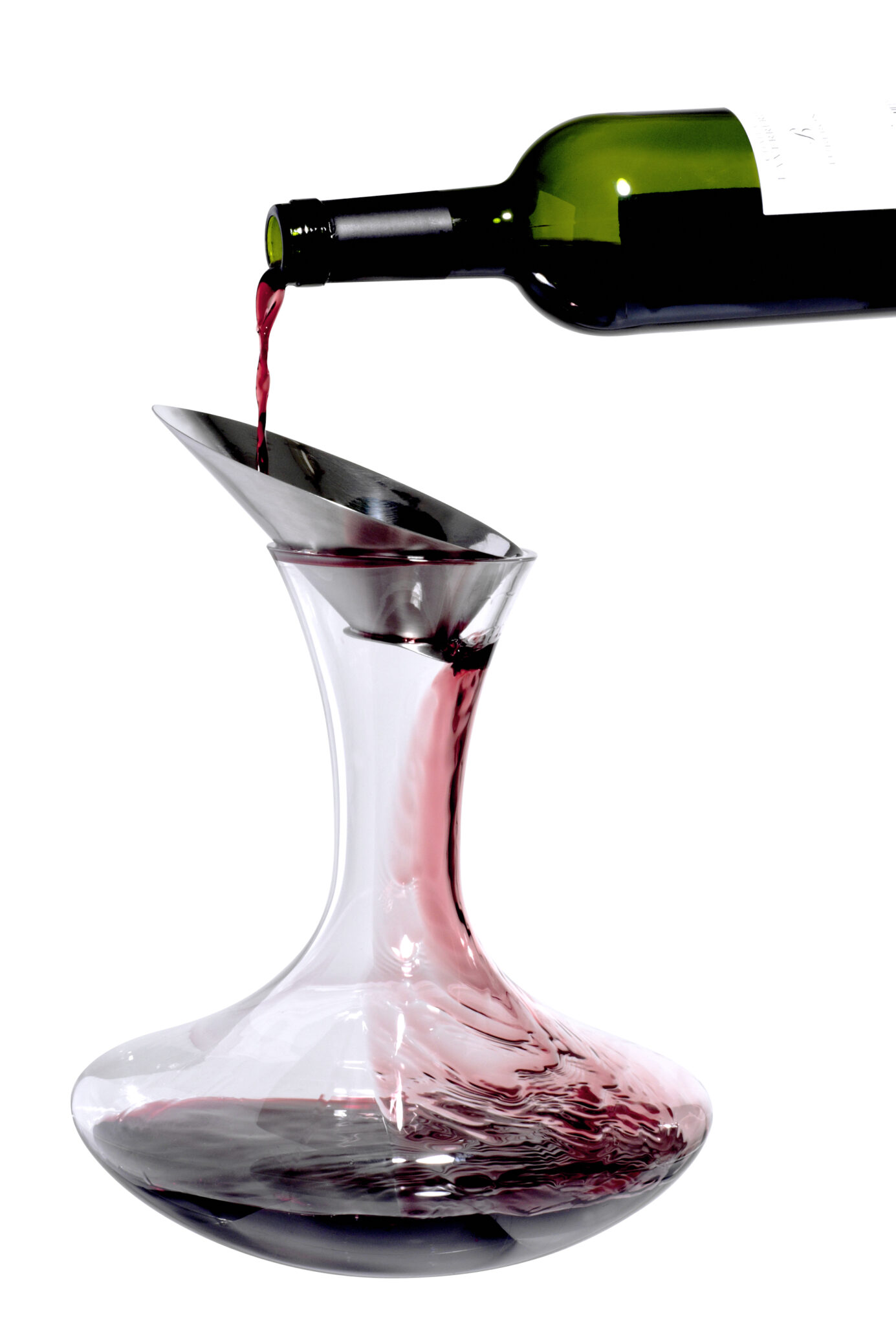
How long should wine be aerated in a decanter before serving?
- A young wine, less than 5 years old, can be decanted (but does not have to be) and then aerated in a decanter for up to 4 hours before serving, which will allow any excessively intense flavors to mellow and the wine’s body to take shape.
- A slightly more mature wine, aged from 6 to 10 years, can be left to breathe for 1 to 2 hours once decanted into a wine decanter before serving in glasses for tasting.
- Finally, an older wine more than 10 years old should be decanted with care and delicacy, and above all, should not be over-oxygenated, which can cause its aromas to disappear, destroying the wine.
How do you use a wine decanter?
Depending on how you use your decanter and what you do when you pour your precious vintage into it, your wine will either be decanted—separated from impurities—or simply aerated. Pouring a bottle of wine into your decanter can simply mean transferring it into a different vessel for serving, without separating it from impurities or necessarily letting it breathe for too long before consuming. A decanter can therefore be used for different purposes. In addition, certain accessories such as wine decanter stoppers and decanting cheesecloths can be used to fine-tune its performance.
Using a decanter to decant wine
In order to successfully decant your wine, only the wine separated from its impurities should reach your decanter. As the wine is poured into the decanter, the whole point of the decanting process is to prevent the sediment from escaping from the bottle into the decanter. In order to achieve this, you have to pour the wine very slowly. As you get closer to the sediment, you have to slow down even more, before stopping altogether and lifting the bottle up before any sediment is able to pass through the neck.
For extra protection, a decanter cheesecloth can be placed over the neck of the decanter to ensure that not even the smallest amount of sediment makes it through. In addition, a decanter with a stopper is very useful for decanting wine without over-oxidizing it, because the wine’s highly volatile flavors can be threatened by overexposure to the open air.
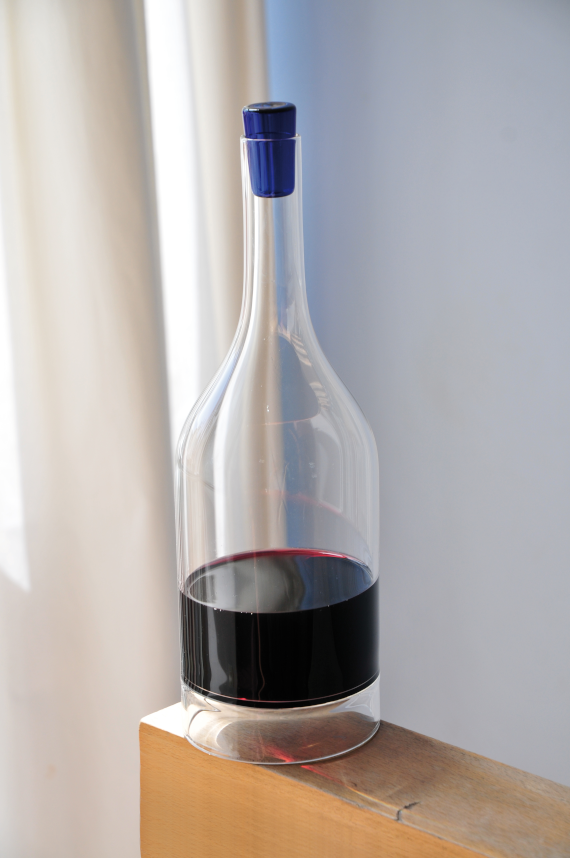
Using a decanter to aerate wine
If you want to use your decanter to just aerate a young wine, for example, you can pour it straight in! The freshness of the wine is accentuated as it splashes against the crystalline walls of the decanter. The wine’s fiery character then gradually settles down, catching its breath as it rests for a few hours in its airy home. When you taste the wine, you will be rewarded with a beautiful blossoming of aromas and flavors on the nose as well as on the palate.
What does double decanting mean?
If you find that some impurities have been poured into your decanter, you can still save the situation thanks to the double decanting technique. First, wash the original bottle (where you have trapped most of the sediment) and then dry it. All you have to do now is to decant your vintage again, pouring it very slowly from the decanter back into its original bottle—this time definitively separating the wine’s nectar from the last traces of unwanted sediment. It is important, however, not to repeat the double decanting process again, as excessive decanting can risk other problems for your precious beverage.
How do you clean a decanter?
Whatever its intended use, a decanter must be perfectly clean and purified before it is used to decant wine, in order to achieve the best results possible. Clean it with water, generously and vigorously, in order to remove any traces or residues of the wine. If possible, avoid using soap to prevent traces of any aroma-destroying chemicals from being left in the decanter. To clean your wine decanter, you can use a big decanter brush, a cloth made from microfibers, or specialist ceramic washing balls. And lastly, a decanter dryer rack will let you dry your decanter perfectly, suspended upside down.
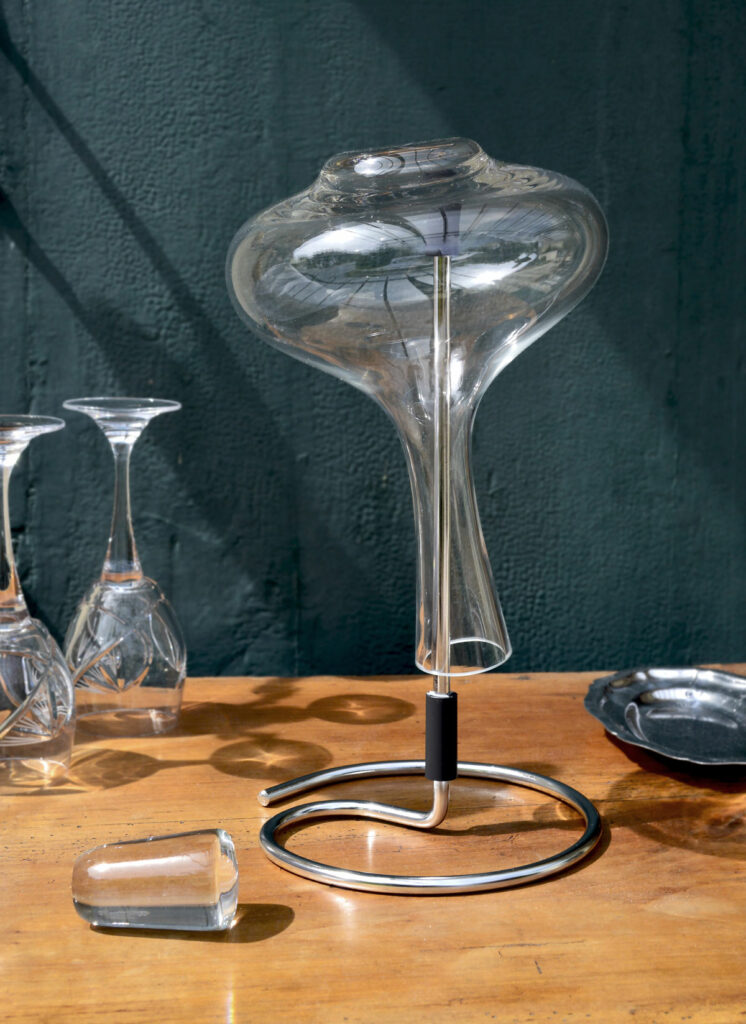
What wines should you decant and aerate?
Decanting is not recommended for all wines. If there is a complete absence of sediment in the bottle, there is no need to decant the wine. However, aeration in a decanter may be necessary, especially for young wines.
For great vintages of red wines, it can be helpful to decant the wine into a decanter, without oxygenating it too much. This is particularly important for tannic red wines with robust bodies that are well structured and rich, which are more likely to form a thick layer of sediment in the bottle as they age.
As a general rule, the great wines of Bordeaux, the Rhone Valley and Madiran, as well as old Cahors vintages greatly appreciate the decanting process. On the other hand, fragile red wines weakened by old age should not be decanted into a decanter—even one with a stopper. Finally, young and fruity wines can be poured into a decanter to aerate and develop, but do not need to be decanted if they are light in color and free of impurities.


